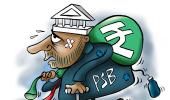The Indian economy was on an impressive growth path through the first decade of this century till it was brought to an abrupt halt by the policy inertia during UPA2 and the Modi government's inability to restore economic and financial momentum.
Fascinating glimpses of what went wrong from Puja Mehra's must-read book The Lost Decade: How India's Growth Story Devolved Into Growth Without A Story.
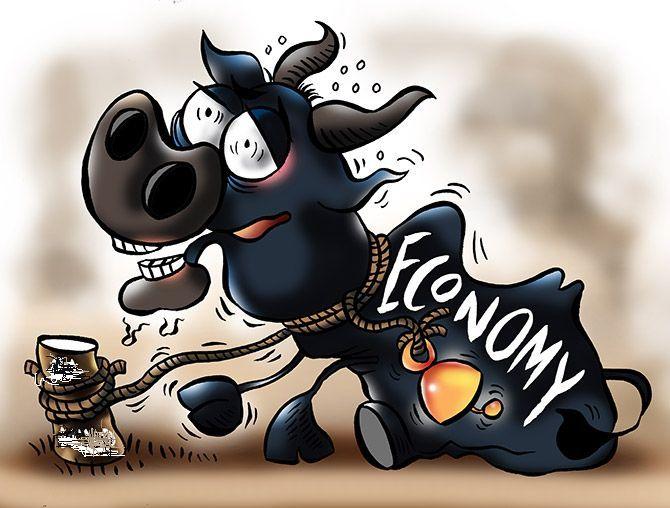
Although the Modi government would be criticised widely for its poorly designed, inadequately thoughtout and populist policies, the Singh government's food security and land acquisition legislations too suffered from a similar disconnect between policy objectives and policy tools.
The difference between Singh's and Modi's governments was that of the powers enjoyed by the ministers.
Singh's Cabinet colleagues could obstruct reforms and force populist decisions.
The reformers were outnumbered and overruled.
Modi's Cabinet colleagues would be mute spectators, a mere rubber stamp on decisions taken in the PMO.
In Singh's Cabinet, conflicting views jostled to block structural reforms and push incrementalism and populism.
Modi's government would suffer from confusion and obfuscation.
The result will be the same: Incrementalism and populism.
In the Cabinet meeting called by Singh's government to approve the important reform of urea pricing decontrols, the minister in charge himself blocked the decision, on the laughable pretext that he could not read the note prepared by the ministry for the Cabinet's consideration because of language problems.
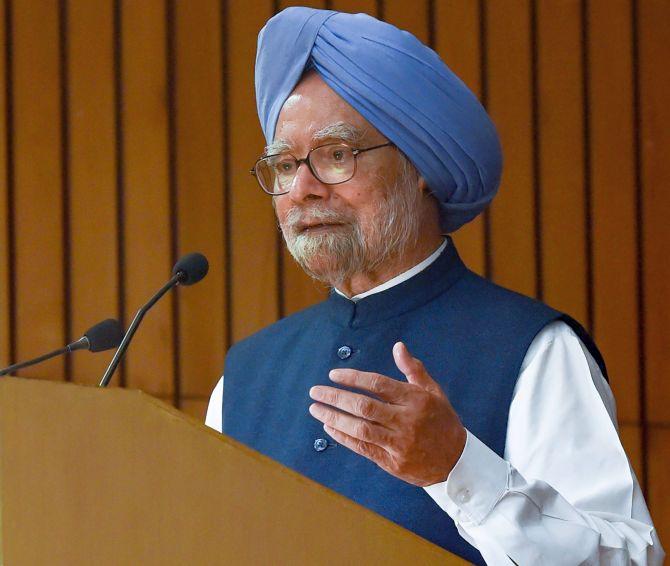
On another occasion, even as the Cabinet was deliberating on a low-key scheme, certainly less earth-shattering than, say, urea pricing, a secretary-level bureaucrat passed chits to Pawar, approached him and whispered something into the minister's ear, and the whole proposal was cancelled.
In yet another instance, the sports ministry had proposed a law for instituting a code of conduct for the various sports federations in the country.
The note for the Cabinet's consideration was circulated.
None of the concerned departments sent in any objections, but in the meeting of the Cabinet no less than eight ministers -- including Agriculture Minister Sharad Pawar, Aviation Minister Praful Patel and MSME Minister Virbhadra Singh -- spoke against the draft.
Many of those who vetoed it held portfolios that had nothing to do with sports.
"Each one of them spoke against it. It got torpedoed. You were left completely nonplussed. They won't say anything at a previous stage... at the meeting, they would start off," says a bureaucrat, now retired, who was involved in the drafting of the law.
"This was in sharp contrast to what used to happen even under the most indecisive prime minister, P V Narasimha Rao, who, people have told me, would hear everybody out and then just say, 'Ok, this is the decision'."
Besides dissonant voices in the Cabinet, there was actual evidence of corruption against at least one minister, who was dropped belatedly.
"But why did they not stop her in her tracks?" says the retired IAS officer, who held important positions in government at the time.
"That phase of 2011-2014. I don't ever want to see again... Most frustrating and disappointing. This is the time when economy was doing well."

UPA minister Salman Khurshid explained in an interview to The Hindu the reason for the lack of direction in government.
In his assessment, it was the duality of authority between Sonia Gandhi and Manmohan Singh:
'Our set up (Congress) was divided between a prime minister and a president. In the past, the prime minister and Congress president were the same people... So when Mrs Gandhi decided not to accept the prime ministership and chose Dr Singh... he was focussed on governance without bothering about things like a local body election and the (coordination with other) political parties (that were part of the coalition) was done by Mrs Sonia Gandhi.'
'There couldn't have been a better model for the efficient governance of the country. But we as a party were accustomed to one single window. So when you went, you went to the prime minister and the party president who's the same person. Having two separate things meant we had to visit two people.'
'But my experience is that whenever I went to Mrs Gandhi, she would tell me "Why are you telling all this to me, tell the prime minister!" She was very particular that the PM take the call ... there was no platform, no place where all this was discussed. All we could do was to go privately and talk to them. Now that was exacerbated by the fact that there were people from another party.'
Singh's personality certainly seems to have been a key factor in the internal collapse -- it recurs in conversations even with his staunchest fans.
"He abdicated responsibility. His attitude always was, 'do not let anything bad happen in my time', 'solve problems on your own'," says a former bureaucrat who worked closely with Singh both when he was finance minister in the 1990s, and later when he became the prime minister.
"He was uninvolved and not passionate, but well-intentioned and good-natured. He was concerned about the crisis, but did not want to get actively involved in the nitty-gritty of actions to resolve the crisis," he says.
***
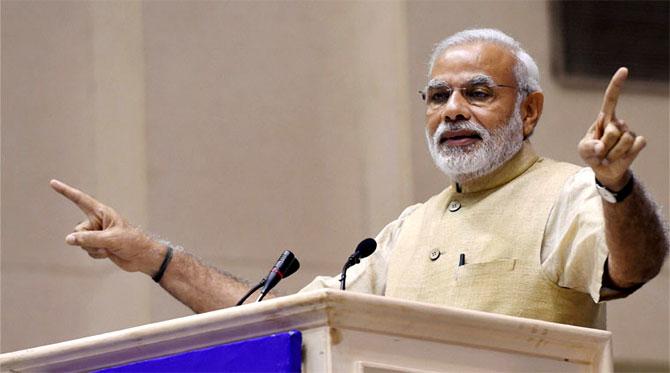
The Modi government continued with a policy of tinkering.
It showed no courage to make drastic changes to aspects of operational autonomy and the ownership of PSBs (public sector banks).
The steps to reform governance of PSBs were limited and ineffective.
PSB boards are still not adequately professionalised, and the government still decides board appointments, with the inevitable politicisation that follows.
Banks are left leaderless for long periods of time, although the date of retirement of CEOs is well known, and the government should be prepared well in advance with succession.
The government did not capitalise the banks adequately.
Nor did it undertake any reforms to free them of political interference and control in future.
It was content to force bank managements to agree -- often against their judgement -- to mergers.
Such as in the case of the Bank of Baroda, a large-sized bank; Vijaya Bank, a medium-sized bank with a relatively better NPA position; and Dena Bank, clearly the laggard in terms of its NPA position.
The RBI's annual report in 2014 had flagged the NPAs in the infrastructure sector.
It stressed the need on the part of government to smoothen out the policy hurdles holding up these projects.

In an interview, Urjit Patel, deputy governor of the RBI then, had told me how the Modi government could have prevented escalation in NPAs.
"If one goes behind the numbers on NPAs of the banking system in the infrastructure sector, it is important to note that these assets are real and can quickly bring in cash for the banking system if we just fix two-three things, such as power purchase agreements, fuel supply agreements. This should be the main task -- to square that circle."
But neither stalled projects nor the NPA crisis received speedy attention for resolution from the government, and its sheer inability to attempt banking reforms means future crises will be hard to prevent.
In the boom years during the UPA tenure, four engines had powered the economy: Exports, government investments, private consumption and private investments.
Of these, two were still running at the time Modi took office: Government investments and private consumption.
The other two, exports and private investments, were already sputtering, with no uptick following the regime change.
The growth engine of private investments had begun stalling 2011-2012 onwards.
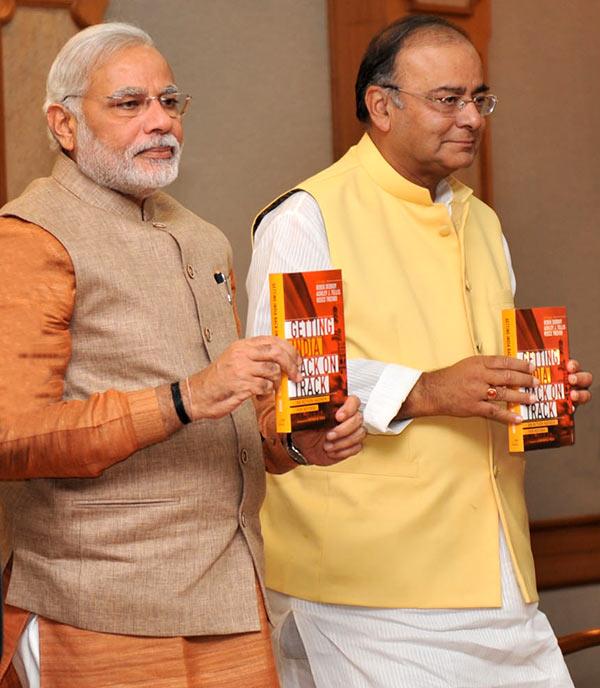
Official statistics had captured the weakness consistently and unambiguously -- in exports for three years, and in private investments for more than five years.
Yet, the debilitating impact of this received inadequate policy attention.
Government investments depend on how well the economy is doing.
As incomes improve, tax collections pick up.
The scope for scaling up government investments was clearly limited.
New private investments remained on hold even after the change of governments in 2014.
The returns-risk projections of projects were not favourable.
Companies were not convinced that new factories would be sufficiently profitable.
Among the variables that affect investment decisions are costs and availability of finance, land, labour, technology, logistics and taxation.
Market price, or in other words, consumer price inflation, is a determinant of profitability on the revenue side.
The Modi government, being politically sensitive, set a low target for consumer price inflation.
For the same reason it made little progress on land and labour reforms.
The flow of credit in the economy had thinned to a trickle even as the government moved on bad bank loans belatedly and inefficaciously.
Several wilful defaulters were absconding.
More than a fifth of large companies did not earn enough in 2017 to be able to pay interest on their loans.
Naturally, the pace of new loans was the lowest in more than six decades.
Even if big companies could raise finance from alternative sources, the smaller ones could not.
Most of the other factors that influence investment decisions escaped policy attention altogether.

Additionally, in an environment of constant shocks and unanticipated policy changes, as happened with the land acquisition law amendments through 2015, the demonetization in 2016 and the GST 2017 onwards, investment decisions tend to get postponed.
If people feel unsettled, they are unlikely to invest.
Although the Modi government had inherited an investment slowdown, the economy had nevertheless been on a steady recovery path for four years.
Macroeconomic stability had been restored.
Global trends in oil and commodity prices had turned favourable.
But the Modi government could not quite leverage these advantages to push growth.
An appropriate growth strategy for the Modi government would have been to work to restore the stuck projects and strengthen the recovery.
And simultaneously work on resolving the banking crisis and NPA problems.
But that was not followed.
The investment slowdown deepened with every passing year of Modi's tenure.
Excerpted from The Lost Decade (2008-18): How India's Growth Story Devolved Into Growth Without A Story by Puja Mehra, with the kind permission of the publishers, Penguin Random House India.



